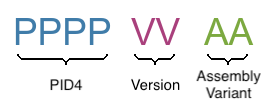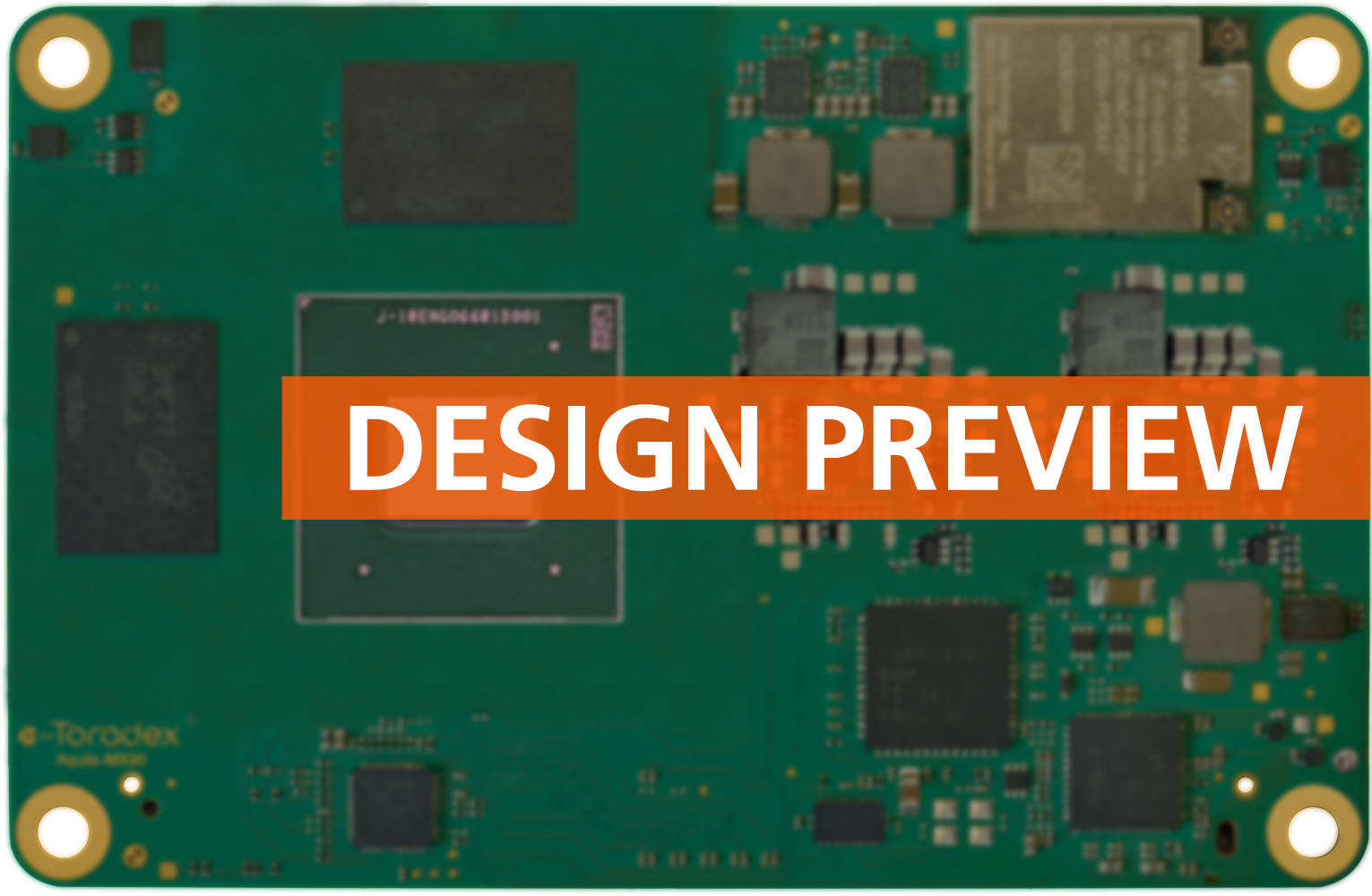Aquila iMX95
Getting Started
Disclaimer: This page is currently under development. The content will be available soon.
Aquila iMX95 is a member of the Aquila Family. You will find all technical details such as features, datasheets, software, etc. here.
Recommendation for a first-time order
For starting for the first time with your Aquila iMX95 you will need a suitable Aquila carrier board as well as some adapters and cables for connecting your desired interfaces.
Toradex recommends ordering one of the following carrier boards for your first-time order:
Where do I buy this product?
You will find availability and purchase information for Aquila products on the Toradex webshop.
Custom Carrier Board Designs
The board-to-board connector is available to Toradex customers for custom carrier board designs, both during development and production. Volume pricing is also available.
For more information, see Aquila Carrier Board Connector.
Getting started for the first time?
For detailed instructions on how to start developing your software for this system on module, check out our software page.
The following Linux-based offerings will be supported soon:
-
Yocto Project Reference Images - binary images built with Toradex reference recipes, a great starting point for customized Linux images. Support for Aquila iMX95 will be announced soon.
-
Torizon OS - open source easy-to-use industrial Linux operating system. Support for Aquila iMX95 will be announced soon.
We have quick video tutorials:
Having trouble?
Please contact our technical support. Various options of technical support are mentioned below:
Hardware
Coming soon
Block Diagram (preliminary)
Datasheets
Aquila iMX95 V1.0
Design Resources
Coming soon
3D Models
Aquila iMX95 - Specific 3D Mechanical Models
The Aquila iMX95 3D model is simplified and contains only the PCB and the CPU. It is intended to be used for heat spreader or heat sink designs. The CPU height is a typical value. Due to production tolerances, the actual height of the assembled component can be different.
Please use the Aquila Family Specification with the maximum component height for testing the mechanical fit. This ensures the mechanical design fits all current Aquila modules as well as future releases.
The specific 3D Models for the Aquila iMX95 V1.0 can be downloaded here:
- SolidWorks CAD model 3D EASM model
- You can download the free eDrawings model viewer from SolidWorks here
- 3D STEP model that can be opened and modified in any 3D CAD
- 3D PDF model that can be opened in Adobe Reader
Carrier Boards
Off-the-shelf Carrier Boards
Learn more on the Aquila Product Family Specification.
Custom Carrier Board Design
Find free reference designs, schematics, 3D designs, and tools to build your carrier board easily in the link below:
Upverter
Upverter is an online carrier board design tool that simplifies carrier board design and software support at the BSP level. The tool is available on the Toradex developer website:
Accessories
Coming soon
Revision History
Click to See the Product Numbering Scheme
Product Number (PID8) Format
The format of the 8-digits Product Number (PID8) is the following:

The below table describes the structure of the Product Number (PID8):
| Field | Description |
|---|---|
| PPPP | 4-digits number, indicating the Product Configuration (PID4) that describes the key properties of the product (e.g. Product Group, RAM capacity, etc.) |
| VV | 2-digits number, indicating the Major and Minor Version (in that order) |
| AA | 2-digits number, indicating the Assembly Variant |
See the complete list of available combinations on the Revision History table of the corresponding product page.
Example
Product number (PID8): 00291100:
0029: Apalis iMX6D 512MB
11: Major Version 1, Minor Version 1, Version V1.1 in short
00: Assembly Variant A
A specific product revision has a lifecycle defined by the product state. Learn more about it on the Product Change Notifications.
0098 Aquila iMX95 V1.0A
| Product # | Product Description | Changes from Previous Version | Release Date | Related Documents |
00981000 | Aquila iMX95 V1.0A | Initial Release | Q4 2025 | Initial release, no PCN document |
Errata/Known Issues
SoC Errata
None
SoM Errata Documents
None
